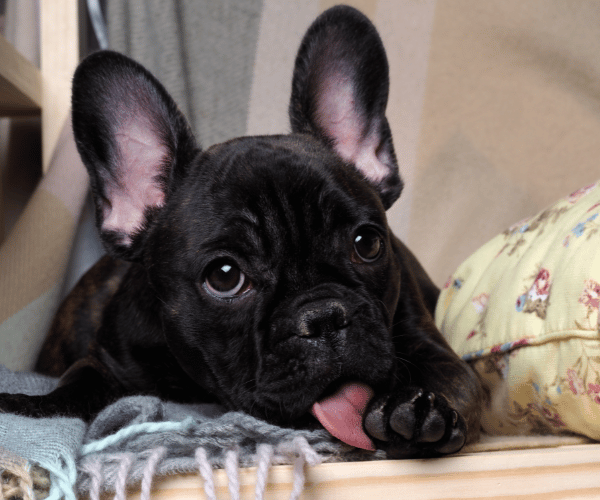Nasal Hypopigmentation in Dogs
Have you ever noticed that some dogs have beautifully pigmented noses, while others have faded ones? It's not just a random quirk; this phenomenon can be intriguing, and even a little mysterious. In this blog post, we'll explore the loss of pigmentation in a dog's nose and uncover the fascinating world of "snow nose" and "Dudley nose." We'll also discover which breeds are more susceptible to these nasal pigmentation changes and why they target our furry friends.

The Colorful Cast of Canines: Breeds with Pigmentation Changes
Nasal pigmentation changes are observed in various dog breeds, showcasing the intriguing diversity of our furry friends. Among these breeds, the Afghan Hound, with its majestic appearance, may experience fading pigmentation in its elegant elongated nose. Similarly, the Samoyed and Siberian Husky, both known for their striking appearances and wintry coats, might exhibit alterations in their nose coloration. Yellow Labs, White German Shepherds, Golden Retrievers, Poodles in their various sizes and styles, Doberman Pinschers with their sleek stature, and Irish Setters with their fiery red coats are also among the breeds that can undergo fluctuations in their nasal pigmentation. These peculiar and charming changes in their nose colors add yet another layer of uniqueness to these beloved breeds, making each individual dog even more special.
Snow Nose: The Winter Wonderland of Dog Noses
Snow nose, also known as "winter nose" or "hypopigmentation," is a curious occurrence in which a dog's nose pigmentation fades during colder months and returns to its normal color in the warmer seasons. Imagine your pup's nose going from black to pink and then back again – it's like a magical winter transformation!
The underlying causes of snow nose are not entirely understood, but it is believed to be linked to temperature and sunlight. Some theories suggest that reduced exposure to ultraviolet (UV) light during the winter months may cause the nose to lose pigmentation. Additionally, genetics may play a role in determining which dogs are more susceptible to snow nose.
So, if your pups' nose appears paler during the cold winter months, don't worry; it's just a case of snow nose, and it's completely harmless!
Dudley Nose: A Gentle Fade to Pink
Dudley nose, sometimes referred to as "pink nose" or "liver nose," is another intriguing phenomenon where a dog's nose gradually loses its pigmentation, turning from black to pink or brown. Unlike snow nose, Dudley nose is permanent and not influenced by seasonal changes.
The underlying causes of Dudley nose are often linked to genetics. Some breeds are more predisposed to this condition, and it is usually more common in lighter-coated dogs, such as the Yellow Labrador Retriever or the Irish Setter. It is believed that the genes responsible for pigmentation in the nose are not fully active in dogs with Dudley nose.
The fascinating aspect of Dudley nose is that it can occur in dogs of any age, not just in older canines, making it a unique and interesting characteristic.
Do I Need to Treat My Dog’s Nose Color Changes?
The good news is that these shifts in nasal pigmentation are generally harmless and don't interfere with your furry companion's keen sense of smell, the nose’s cobbled texture, or the surface moisture on your dog’s nose. While the change in color might catch your eye, it doesn't impact your dog's overall health or well-being. However, it's essential to be aware that a lack of pigment can make your dog's nose more susceptible to the sun's harmful UV rays. To protect their sensitive snouts from sunburn, especially in breeds with lighter noses, it's a great idea to consider using a dog-friendly sunscreen when spending time outdoors.
Daily Dog Grooming Care:
Luckily, with the help of Squishface Nose Balm - you have a helpful solution to keeping your dog's nose healthy and hydrated. With nourishing, soothing ingredients such as shea butter and berry seed oil, this balm helps dry or cracked snouts and forms a protective barrier against windburn and sunburn. This balm is perfect for all dog breeds and effectively protects pups' delicate snouts.
Maintaining your pet's hygiene is a breeze with a selection of specialized dog grooming products. To keep your dog's facial folds and wrinkles clean, Squishface Wrinkle Wipes are a convenient and mess-free option, offering a quick solution for busy pet parents. They help in the fight against bacteria, yeast, and fungus all while excluding any potential irritants that may affect your pup.
Wrinkle Paste (for short-haired breeds) and Tear Stain Paste (for long-haired breeds) go beyond ordinary pet grooming products by forming a water-repellent barrier that helps shield sensitive areas from moisture and irritants. Infused with nourishing ingredients like shea butter, avocado oil, and coconut oil, these specialized pastes not only combat skin issues but also provide a soothing touch to keep your furry friend's skin healthy and comfortable.
The Bottom Line:
In conclusion, the loss of pigmentation in a dog's nose can be a source of curiosity and intrigue for pet owners. While some breeds are more prone to these changes, it's essential to remember that it can affect any dog, regardless of age or breed. Snow nose, with its seasonal whimsy, and Dudley nose, the permanent transformation, add to the vast array of canine diversity.
The next time you see a Siberian Husky with a slightly lighter nose in the winter, or a Yellow Labrador Retriever with a charming pink nose, you'll know the fascinating reasons behind these quirky nasal changes. Embrace the uniqueness of your furry friend's nose and love them just the way they are!
Be sure to follow us on TikTok, Instagram, Facebook, Pinterest, YouTube, and visit our blog weekly for more tips on caring for your darling doggo, and the latest on all things Squishface!












